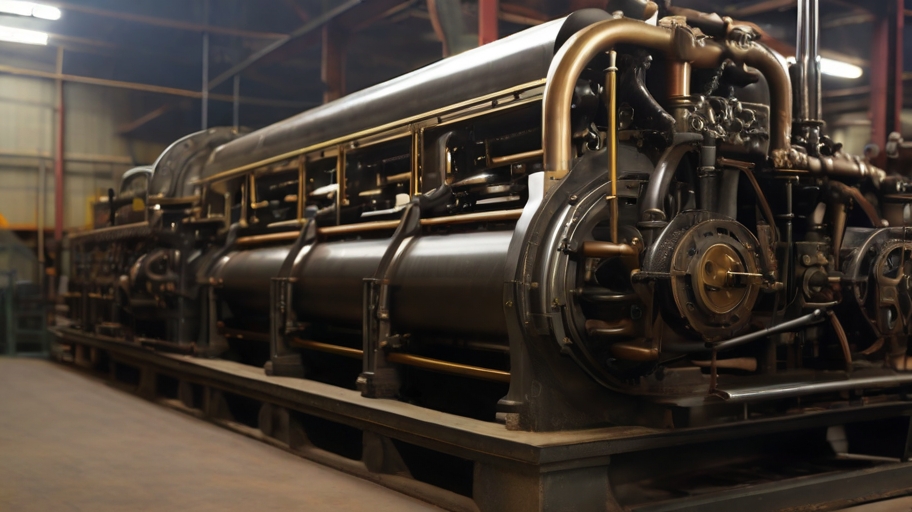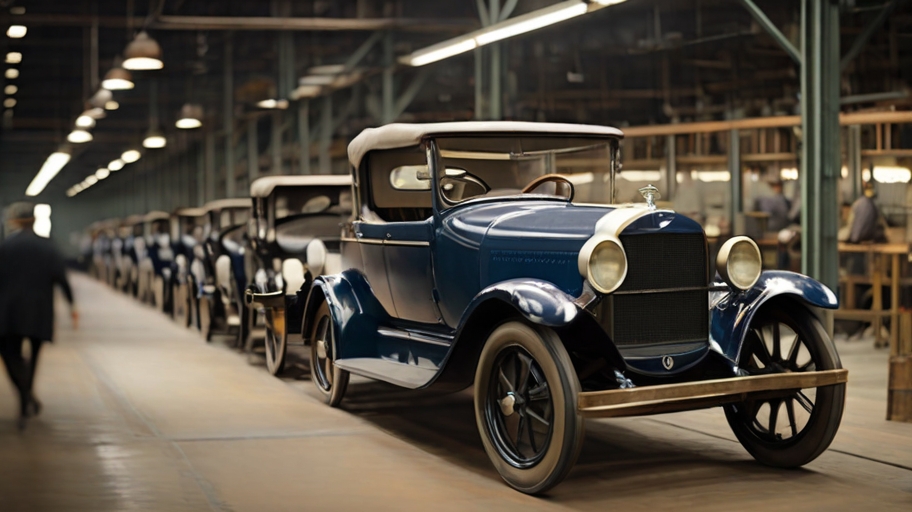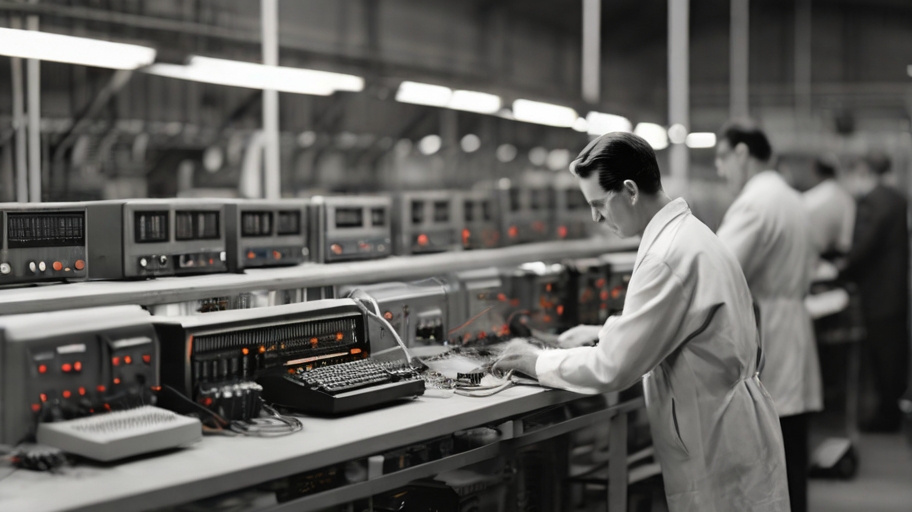Unraveling the Tapestry of Progress: From Industry 1.0 to Industry 4.0
In the symphony of progress, each industrial revolution has played a distinct note. Now, at the doorstep of Industry 4.0, a melange of digital innovations is poised to redefine not just how we manufacture but how we perceive industry itself. This blog unravels the intricate threads of this journey, exploring pivotal moments and multifaceted impacts that have brought us to the precipice of this technological revolution.
The Industrial Revolution Phases:

Industry 1.0

Industry 2.0

Industry 3.0
1. Industry 1.0: Mechanical Production (Late 18th Century)
Steam and Spindles: The Genesis of Mechanized Production
The birth of industrialization witnessed the rise of steam power and mechanization, laying the foundation for the transition from manual craftsmanship to mechanized processes. Water and steam-driven machines heralded a shift in production capabilities, allowing for increased output and efficiency.
2. Industry 2.0: Mass Production (Early 20th Century)
Assembly Lines and Electrification: The Symphony of Mass Production
Henry Ford’s assembly line and electrification marked an era of standardization and efficiency, enabling industries to meet global demands on an unprecedented scale. The introduction of electrical power transformed factories into dynamic hubs of production, with the rhythmic hum of machinery driving economic growth.
3. Industry 3.0: Automation (Late 20th Century)
Digital Frontiers: Automation and the Rise of Computers
The late 20th century ushered in an age of automation, where computers and electronics transformed manufacturing processes, paving the way for the digital era. The integration of computers and automated systems brought about unprecedented precision, allowing for the optimization of industrial processes and the birth of computer-controlled manufacturing.
The Path to Industry 4.0:




1. Digitalization and Connectivity
Wired for Progress: Digitization as the Catalyst
The journey to Industry 4.0 began with the digitization of information and processes, intertwining industries in a web of connectivity facilitated by computers and the internet. Digitalization became the catalyst for a paradigm shift, where data became the lifeblood of operations, laying the groundwork for a connected and intelligent future.
2. Big Data and Analytics
Data Alchemy: Turning Information into Insight
Big Data analytics emerged as the compass navigating industries through the sea of information, providing invaluable insights for decision-making and process optimization. The ability to process and analyze vast amounts of data became a cornerstone of Industry 4.0, enabling businesses to derive actionable insights and make informed strategic decisions.
3. Internet of Things (IoT)
Smart Machines, Intelligent Factories: The Rise of IoT
The Internet of Things transformed inert machinery into intelligent entities, creating a living ecosystem where machines sensed and responded to changes in their environment. IoT became the connective tissue, enabling real-time data acquisition, monitoring, and control. Smart sensors embedded in machines and products formed an intricate network, fostering a responsive and adaptive manufacturing environment.
4. Artificial Intelligence (AI) and Machine Learning (ML)
Learning Machines: AI and ML in the Driver’s Seat
Artificial Intelligence and Machine Learning became the brains behind Industry 4.0, enabling machines not only to process data but to learn from it, optimizing decision-making processes. Advanced algorithms allowed systems to recognize patterns, make predictions, and continuously improve, creating a dynamic and self-optimizing industrial landscape.
5. Cyber-Physical Systems (CPS)
Beyond Digital: The Integration of Physical and Virtual
The convergence of the physical and digital domains marked the dawn of Cyber-Physical Systems, orchestrating a seamless coordination of physical processes and computational capabilities. CPS became the bridge between the tangible world of machinery and the virtual realm of digital information, blurring the lines between the physical and digital domains.
The Impact of Industry 4.0:
1. Increased Efficiency and Productivity
Efficiency Unleashed: Automation, Analytics, and Real-time Monitoring
Industry 4.0 is synonymous with efficiency, with automated processes, real-time monitoring, and predictive analytics driving productivity to new heights. Automation and robotics optimize routine tasks, while analytics provide insights for continuous improvement, reducing downtime and enhancing overall operational efficiency.
2. Customization and Flexibility
Crafting the Future: Mass Customization at Scale
Mass customization becomes the norm as Industry 4.0 enables highly personalized products through adaptive production systems and real-time analytics. Digital twin simulations and flexible manufacturing processes empower industries to tailor products to individual customer needs, fostering a new era of customization on a mass scale.
3. Predictive Maintenance
Predicting the Unpredictable: The Crystal Ball of Industry 4.0
Predictive maintenance, powered by IoT sensors and AI algorithms, transforms maintenance into a proactive, data-driven endeavor, minimizing downtime and reducing costs. Machines equipped with sensors continuously monitor their health, allowing for timely interventions and preventing unexpected failures, ultimately extending the lifespan of equipment.
4. Workforce Transformation
Humans and Machines in Harmony: Redefining Roles
As machines take on routine tasks, the human workforce undergoes a transformation, shifting towards skilled roles and fostering a symbiotic relationship with intelligent systems. Upskilling becomes imperative as human workers collaborate with machines in areas such as data analysis, system optimization, and complex decision-making, marking a paradigm shift in the nature of work.
5. Global Connectivity
From Local to Global: The Interconnected Web of Industry 4.0
Industry 4.0 transcends borders, fostering collaboration and integration across global supply chains through digital platforms, cloud computing, and interconnected ecosystems. Real-time communication and information exchange enable seamless coordination among stakeholders, promoting innovation and efficiency on a global scale.
Conclusion:
Architects of a New Dawn: Embracing Industry 4.0
As we stand at the crossroads of history and progress, the journey to Industry 4.0 is not merely a technological evolution but a paradigm shift in how we conceive and conduct industry. Embracing Industry 4.0 is not just a choice; it is an imperative that opens the door to a future where efficiency, customization, and sustainability converge in a harmonious dance of progress. As pioneers of this revolution, we are not just witnessing change; we are the architects of a new industrial dawn, shaping a future where technology serves humanity and propels us towards collective progress.
About
“Empowering businesses with cutting-edge automation solutions, we are dedicated to delivering seamless business automation. Unleash the power of innovation, enhance productivity, and thrive in the competitive landscape with our bespoke solutions. We specialize in revolutionizing businesses through automation. Experience a seamless integration of technology and efficiency as we propel your enterprise to new heights.”
Quick Links
© 2024 Autoom Studio. All Rights Reserved.
